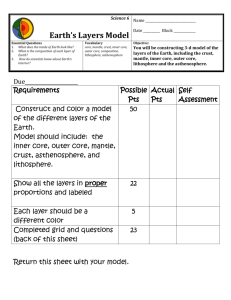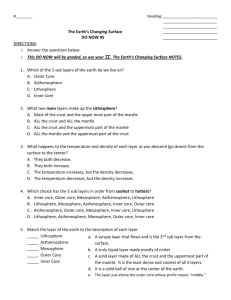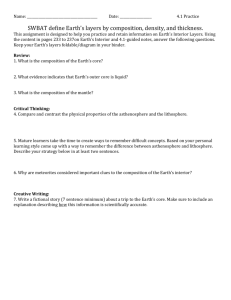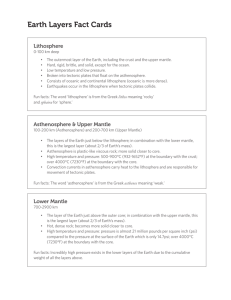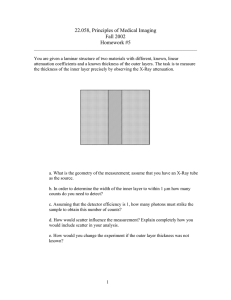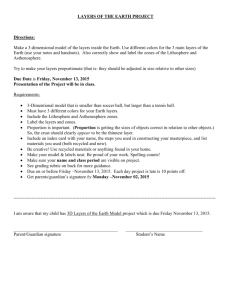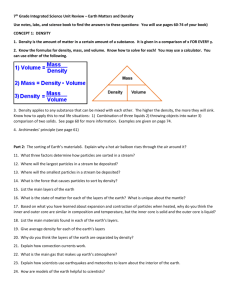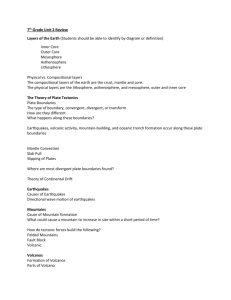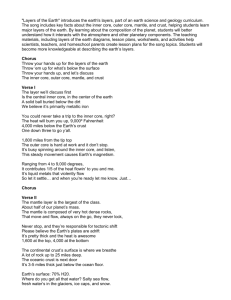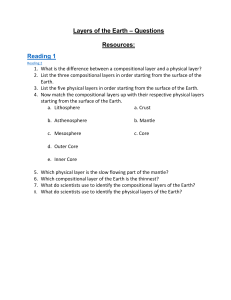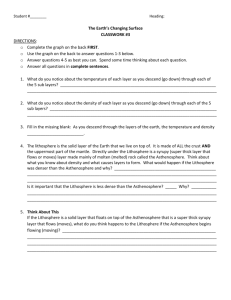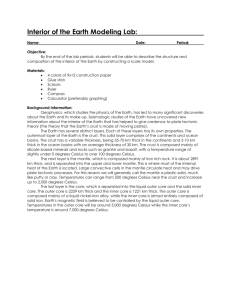Common Lab 1
advertisement
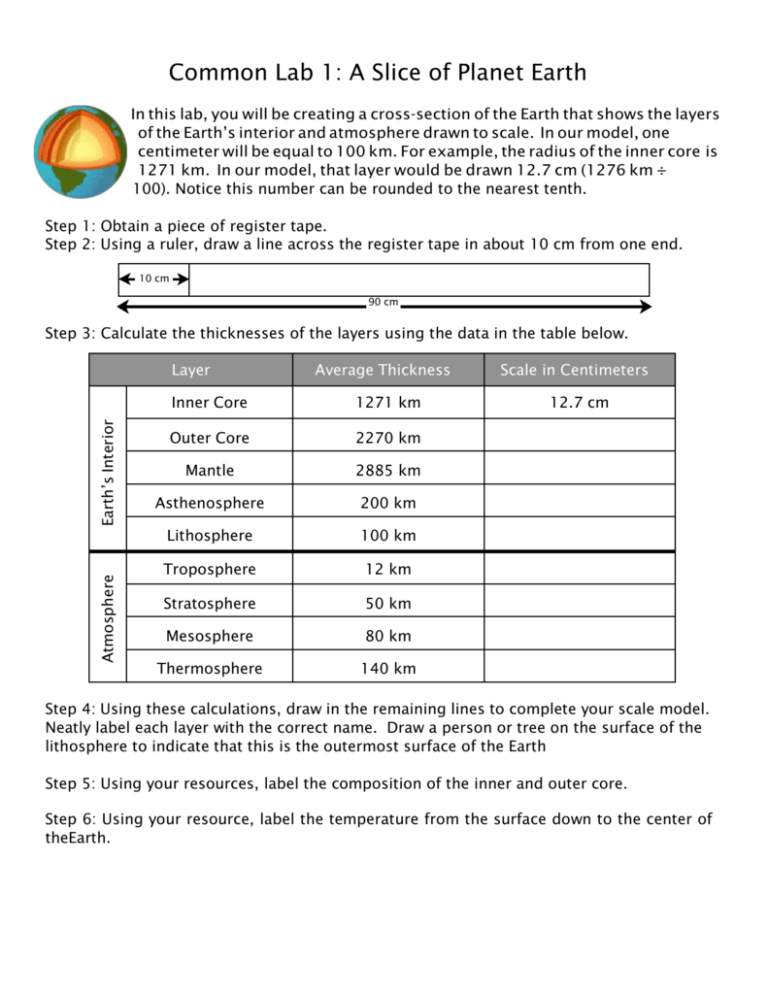
Common Lab 1: A Slice of Planet Earth In this lab, you will be creating a cross-section of the Earth that shows the layers of the Earth’s interior and atmosphere drawn to scale. In our model, one centimeter will be equal to 100 km. For example, the radius of the inner core is 1271 km. In our model, that layer would be drawn 12.7 cm (1276 km ÷ 100). Notice this number can be rounded to the nearest tenth. Step 1: Obtain a piece of register tape. Step 2: Using a ruler, draw a line across the register tape in about 10 cm from one end. 10 cm 90 cm Step 3: Calculate the thicknesses of the layers using the data in the table below. Atmosphere Earth’s Interior Layer Average Thickness Inner Core 1271 km Outer Core 2270 km Mantle 2885 km Asthenosphere 200 km Lithosphere 100 km Troposphere 12 km Stratosphere 50 km Mesosphere 80 km Thermosphere 140 km Scale in Centimeters 12.7 cm Step 4: Using these calculations, draw in the remaining lines to complete your scale model. Neatly label each layer with the correct name. Draw a person or tree on the surface of the lithosphere to indicate that this is the outermost surface of the Earth Step 5: Using your resources, label the composition of the inner and outer core. Step 6: Using your resource, label the temperature from the surface down to the center of theEarth. Step 7: Go over the boundaries between the layers with a black marker. Then, using colored pencils, lightly and neatly shade the layers using the following color scheme: Layer Color Inner Core Brown Outer Core Red Mantle Orange Asthenosphere Yellow Lithosphere Pencil Troposphere Light blue Stratosphere Pink Mesosphere Dark blue Thermosphere Purple Color the remaining space black Step 8: On ISN p22, answer the following questions. 1. List the layers of the Earth’s interior from least dense to most dense. 2. Based on the information in your resources, what do you think the main composition of the Earth is? 3. Using a ruler, how many centimeters thick is the solid Earth (from the start of the inner core to the outer edge of the lithosphere)? 4. The actual radius of the Earth is 6,378 km. How far off was your previous answer? Why do you think it was different? 5. Why is the inner core the densest layer? 6. Analyze the layer in which life exists. How does the thickness of this layer compare with the total thickness of the Earth?
